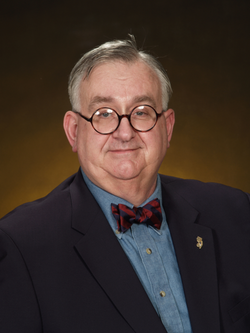A recent trip to speak at the New England Fire Chief's Association conference in Springfield, Massachusetts gave me the opportunity to see the concept and perspective of highway safety from the other side. To those of us who dash out onto the highways of the world to do our critical safety-related tasks, there is but one perspective to this issue: ours.
There is, however, another side to the story. I want to say a few words right here and now about why safety training and education are so critical. The people out there on those highways are being driven batty by the conditions they are forced to face. My recent trip made that issue crystal clear to me.
To say that traffic on Interstate Highway 684 in New York, and Interstate Highway 84 in Connecticut was abysmal is to give both highways too much praise. I spent 45 minutes just trying to make the merge from I-684 to I-84 in New York. That was a grand total of two miles.
From then on out it was a matter of seeing the greater part of Connecticut from Danbury to Hartford at an average speed of about 30 miles-per-hour. I want you to understand that this involved bursts of 55 miles-per-hour and stretches of stopped-dead for a while. The traffic finally started to move at the point where I was finally able to shoehorn my way off of I-84 onto I-91 north. Needless to say, by the time I reached Springfield, Massachusetts, I was in serious need of a quiet place to hide.
I shared my story as part of my Keynote Address the next day. All in attendance nodded their heads in agreement with my assessment of the deterioration that has taken place on our highways. We all agreed that the thrill of the open road was a dusty old memory.
At the appointed time that afternoon, I hit the road for home. I can remember making a conscious decision to take another route home. I opted to take I-91 down to its juncture with I-95 in the New Haven, Connecticut area. I felt like such a smart little boy as I winged my way down I-91, headed for New Haven in a high-speed, low-drag mode. Of course I was operating well within the specified speed limit for that part of I-91. It was just so pleasing to be moving.
When what to my wondering eyes did appear? As I rounded a wide and comfortable bend in the road, the entire four lanes of the superhighway became a sea of taillights. I spent the next 30 minutes doing the four-foot shuffle as traffic crept and crawled forward.
Since I was in no particular rush, I just rolled along with the flow, while puffing on one of my favorite tobacco-flavored diversions that had first seen the light of day in a tobacco field somewhere in Nicaragua. I also cranked up my stereo and shared the joy of the musicians on the CD who were doing great justice to one of my favorite composers. In short, I prepared myself for the long, slow haul.
However, if the acts, actions, and activities of my fellow travelers was any indication, they were far more ready to battle for a few feet of highway than to share them with me. I began to fear for the green-clad fenders of my precious GMC Yukon. Road rage was at work in my immediate vicinity. Obscene gestures were the order of the day all around me. And if looks could kill, I-91 would have been strewn with the corpses of many motorists. Personally, I sunk further into the smoky depths of my turn of the century circus musical world.
By now you may be wondering why I am sharing my traffic horror story with you. I do this for a simple reason. I want you to understand the mindset of those people who suddenly encounter our emergency interruption of their smooth-flowing (HA, HA, HA!!) traffic stream. Those people that seem to be doing their best to hit you are really just shell-shocked victims of our modern traffic battles. And they really do not care about us, or the good works we are attempting to do.
Now back to Connecticut. After about 35 minutes of dancing in a highway traffic Congo line, I finally came to the cause for our bout of speedus interuptus. There had been an accident. It was off to the right side of the road, into the tree line. The local fire police had been brought out to shut down a lane, in order to assist their local fire department, the EMS workers, and the Connecticut State Police on scene.
My hat is off to the members of the Rocky Hill, Connecticut Volunteer Fire Department's Fire Police unit. They created a near text book traffic exclusion zone that made the operational area secure for a distance of several hundred yards prior to it. I can only imagine the effort it took to set up that long line of orange traffic cones. I wish to publicly commend the members of that unit for their well-trained delivery of a highway safety zone. Trust me when I say that I have seen far worse.
Here is the point. We have a dangerous job to do. The people who are out and around us are not always members of the Happy Camper's Club. Because of this, we have to redouble our efforts to be sure all of us that hit the road know what we need to do and how to do it.
Safety is our business. Just do it like your life depended upon it.


